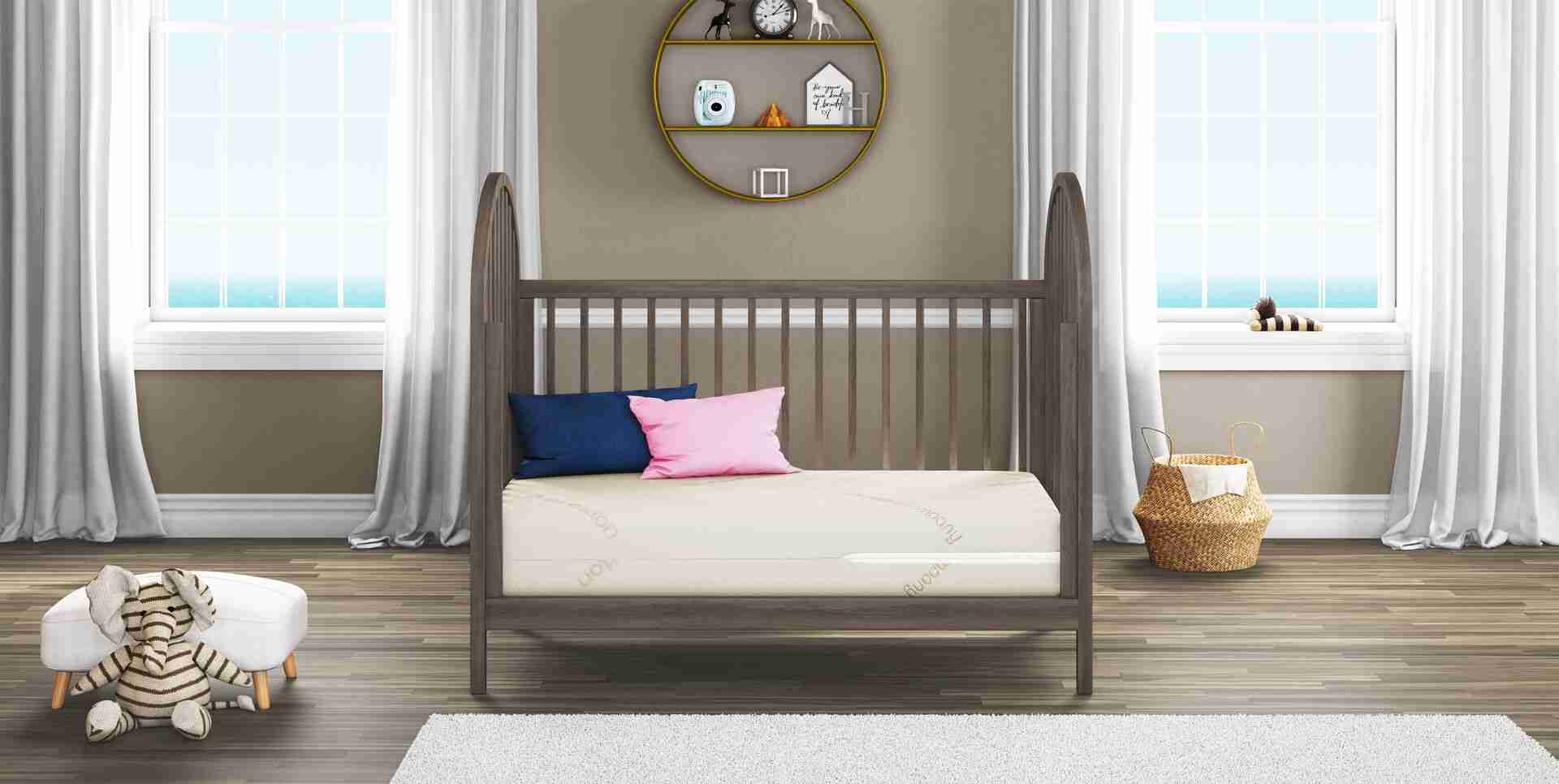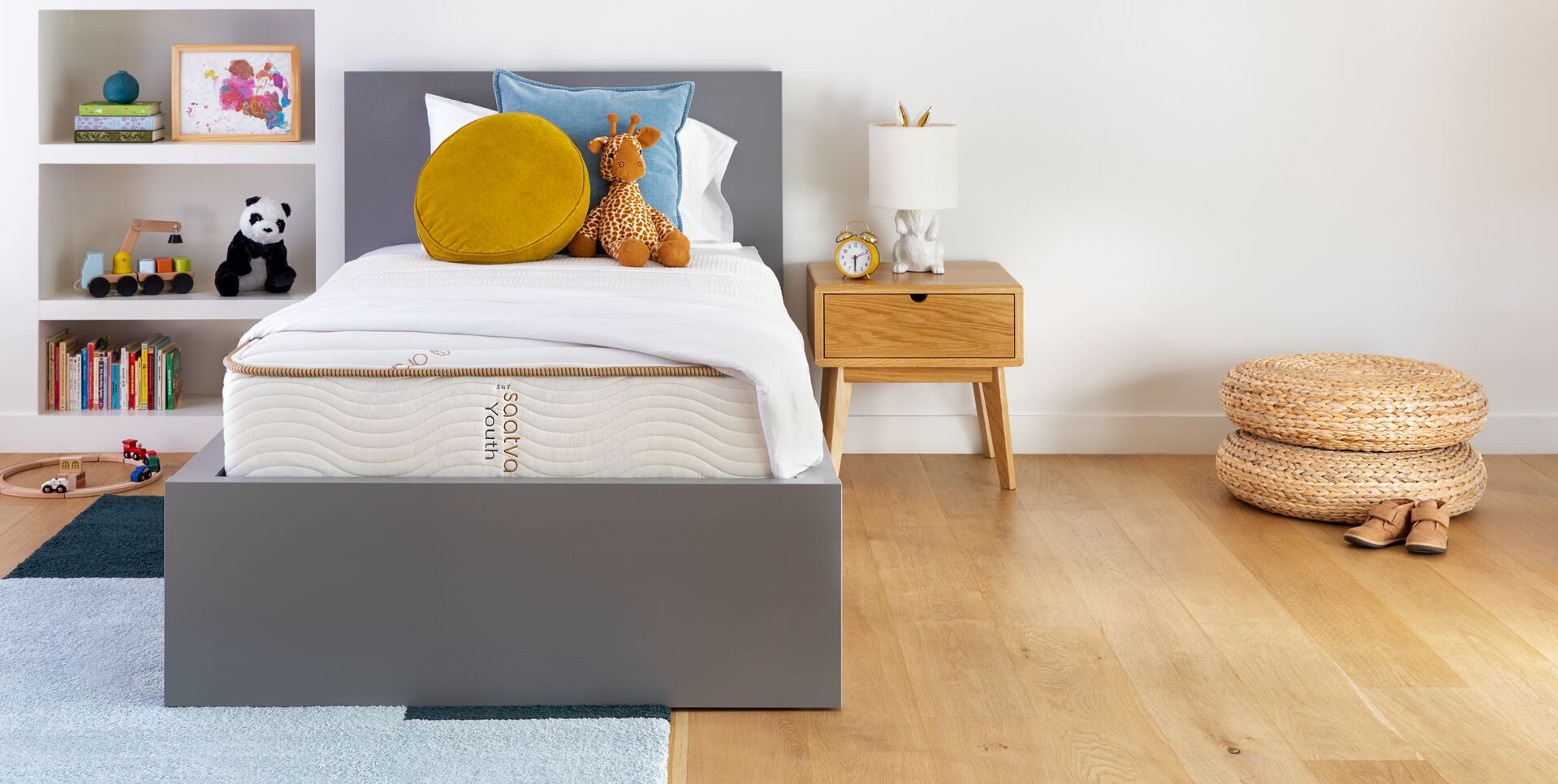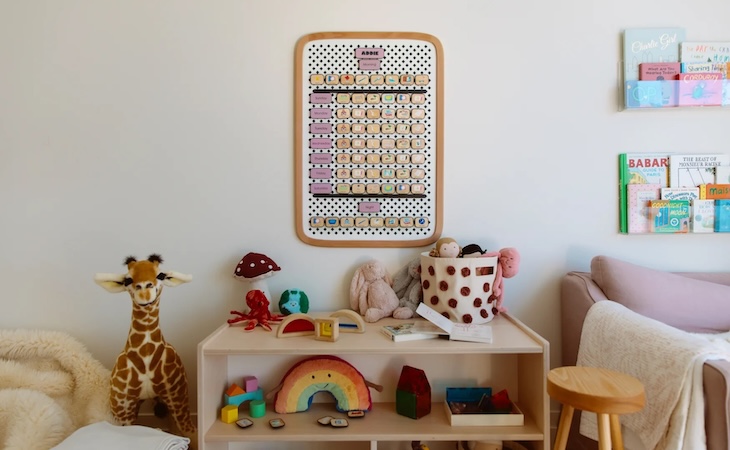In the throes of sleep deprivation the summer I had my daughter, Sunday, I remember a friend with a toddler telling me that soon, the baby would be sleeping 7 p.m. to 7 a.m.
It sounded like some kind of a pipe dream, but as summer turned to fall and fall turned to winter, sleep came more easily and I got my nights back.
That kind of a sleep pattern tends to continue as the years go on: After all, toddlers need a lot of sleep (between 12 and 14 hours every day, to be exact).
But getting a toddler to sleep? Whether you’re trying to get your child to fall asleep, stay asleep, or both (!), it’s often downright difficult. That’s because there are tons of factors that play a role in toddler sleep—where you are, what your routine is, how tired your kid is, how you behave as a parent, the list goes on.
Helping a toddler get to sleep
In a dream world, your child would fall asleep on their own, stay asleep all night long, wake up at a decent hour, and meet those sleep requirements (those long, glorious 12- to 14-hour time slots, usually broken up between one nap and overnight sleep) a little more easily.
How do you get there? Start here:
Pay attention to wake windows
When my daughter was born, one of the best suggestions I got was to buy a sleep program from Taking Cara Babies, a company founded by neonatal nurse and certified pediatric sleep consultant, Cara Dumaplin.
One of the mainstays of the program is ensuring that your child stays awake the ideal amount of time for their age to prime them for sleep. When a baby’s little, this window of time might only be an hour. By 14 months, it’s between five and six hours.
Keeping your child awake the ideal amount of time between naps and bedtime means they build up enough of a drive to sleep—and keeps them on a set schedule, which feeds into appropriate nap requirements and overnight sleep for toddlers.
Set boundaries
Think your child’s sleep is all about your child? Parents are a big part of the toddler sleep puzzle, explains Lynelle Schneeberg, PsyD, fellow of the American Academy of Sleep Medicine and author of Become Your Child’s Sleep Coach: The Bedtime Doctor’s 5-Step Guide, Ages 3-10.
In fact, a top reason for both frequent nighttime wakings and having a hard time falling asleep is a well-intended one: too much parent assistance. (If you’re there when your child falls asleep, when your little one wakes up in the middle of the night and you’re not, they might cry out for you.)
Of course, nothing pulls on a parent’s heartstrings like a child who cries for them when they leave. But instead of quickly returning, the American Academy of Pediatrics suggests first waiting a few seconds—and making your response time longer each time your child calls (giving them a chance to fall asleep on their own).
The group also suggests reassuring your child that you’re there (and if you need to go in the room, doing so without turning on the light, playing with your child, or staying too long).
While you always want to make sure your child is safe—and you may need to return to provide some comfort and reassurance—these measures will ultimately help your toddler develop a more independent routine over time.
Related: A sleep coach’s 5-step plan for getting your kids to sleep
Stick to a set routine
You’ve likely heard that you should wake up and go to bed around the same time every day. The same is true for your toddler. Why?
“First, our brains and bodies really do better with a very consistent schedule,” says Schneeberg. “This is because the body releases sleep and wake hormones and can better figure out when to release these when our schedules don’t vary much from day to day.”
Second? Kids love to stall around bedtime and delay going to bed, she explains. If your kids know that you always stick to a consistent period of time to start and finish the routine, stalling isn’t up for discussion night after night, she says (read: you’ll have a smoother overall bedtime process).
Having a hard time with a kid who loves to put bedtime off? “Make a chart showing your child doing each step in the bedtime routine,” suggests Schneeberg (for example, having a snack, taking a bath, putting on pajamas, brushing teeth, and reading a book in bed). “If your child begins to stall after the snack, you can say something like, ‘The chart says it’s time to go have a bath. Would you like to race me up the stairs to the bathroom or shall I carry you?'”
Prime your child’s environment
Setting up a bedroom made for sleep is often easier said than done, but Schneeberg notes that, for the most part, keeping things simple is best.
What does that look like? First, you always want a dark enough, cool, and comfortable room (the ideal sleep environment for anyone), then consider adding items such as a reading light or a book. (Personally, I’ve also had a lot of luck with a sound machine.)
Take away items such as electronics, says Schneeberg, and avoid keeping anything on in the room that turns off later in the night (read: lights or music). Noticing a change like this in the middle of the night is enough to wake you up. It’s best to keep pets out of a toddler’s room too since they’re unpredictable, she says (sorry!).
Has your little one outgrown their crib? Here’s how to transition a nursery into a “big kid” room.






